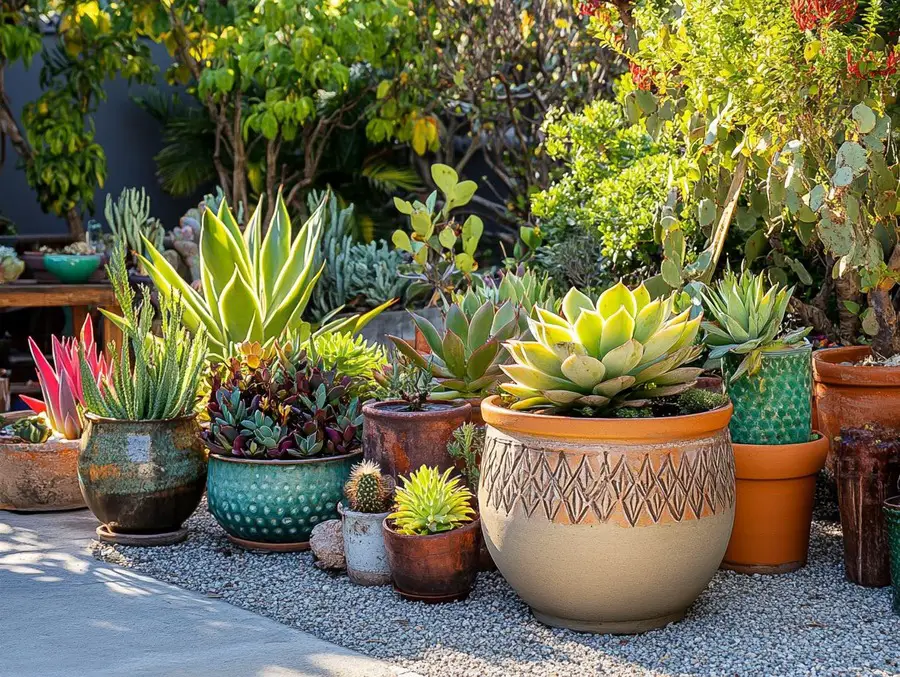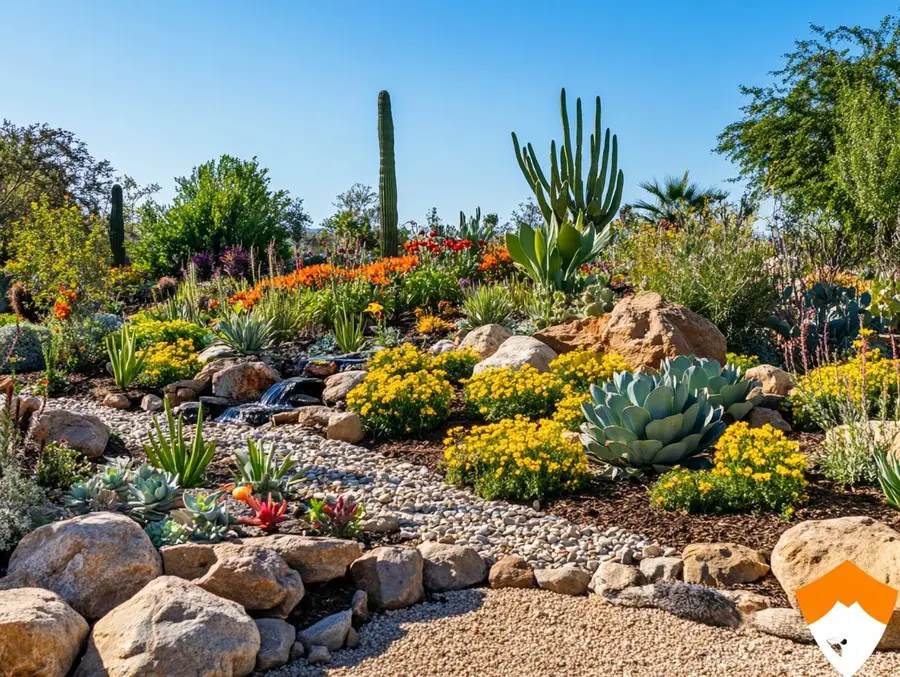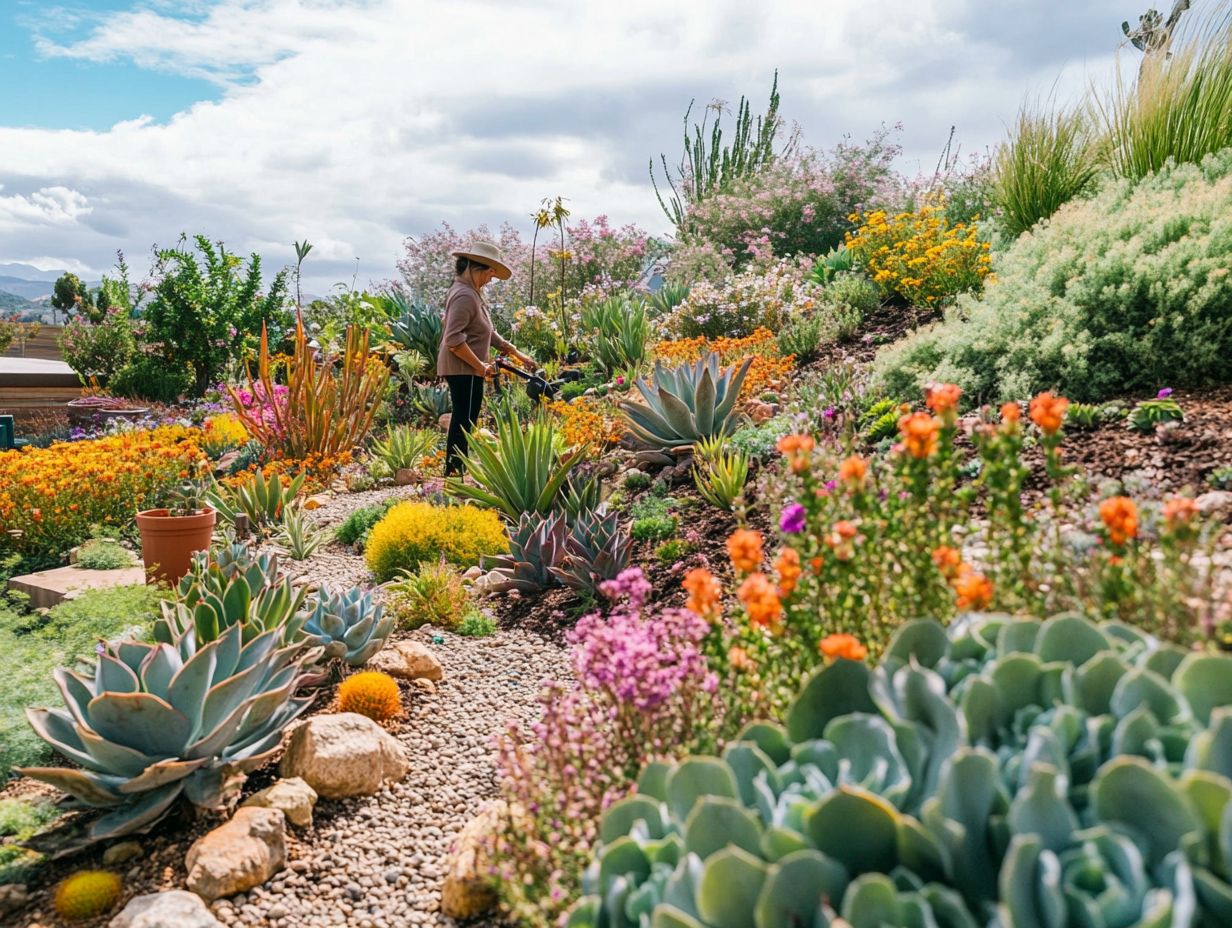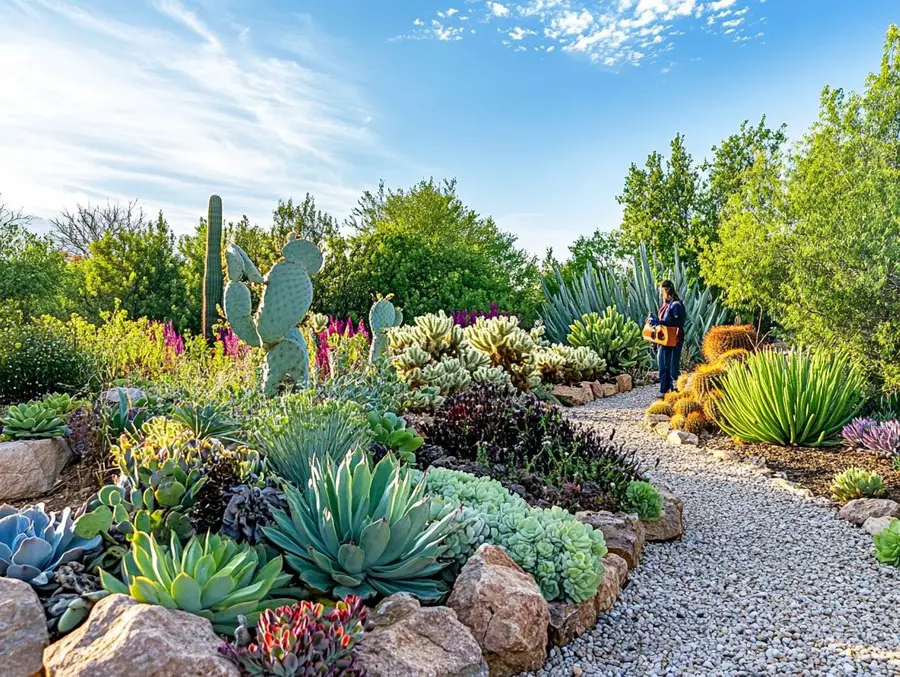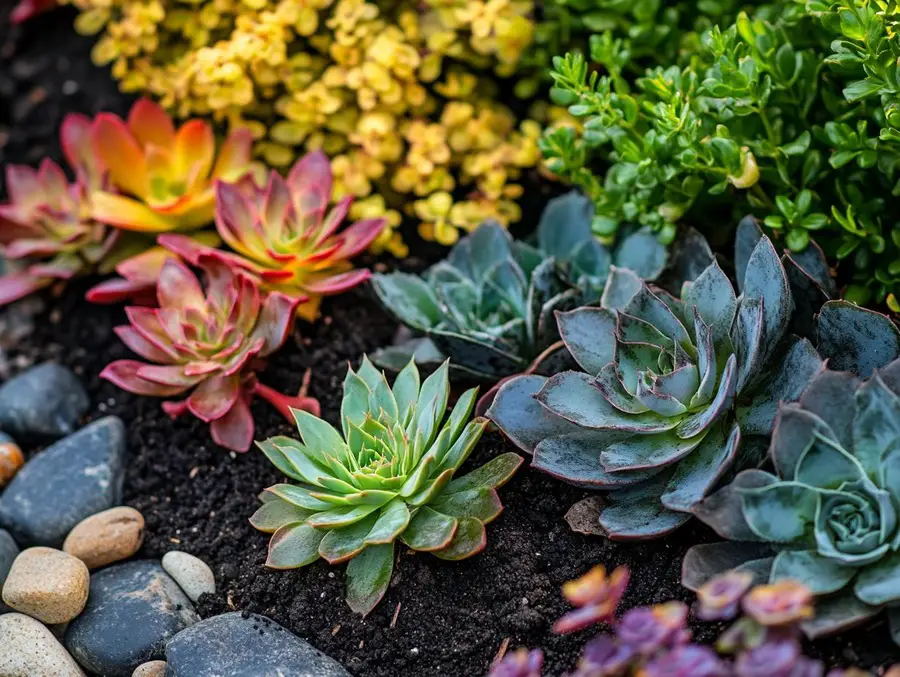We use affiliate links. If you purchase something using one of these links, we may receive compensation or commission.
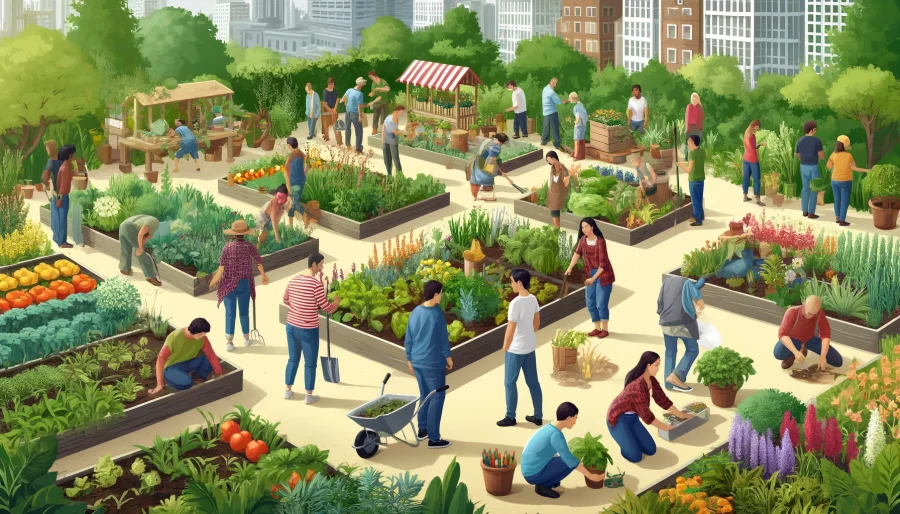
Have you ever wondered, “What is a Community Garden?”
It’s a place where neighbors come together to grow plants, veggies, and flowers, turning vacant lots into vibrant green spaces.
These gardens build community ties and offer fresh produce, making them a true asset to any neighborhood.
What is a Community Garden?
Key Takeaways
- A Community Garden is a shared space where neighbors grow plants, vegetables, and flowers together.
- It fosters community bonds and provides fresh produce.
What is a Community Garden?
Community gardens are shared green spaces where folks from a neighborhood come together to grow plants, vegetables, and flowers.
These gardens can take various forms, from individual plots rented by gardeners to larger, collective gardening efforts.
Community gardens bring people together, offer fresh produce, and beautify urban areas.
Definition and Purpose
A community garden is any piece of land gardened by a group of people.
It can be a vacant lot, a park, or even part of a school or church.
These gardens are usually managed by volunteers who share responsibilities and harvests.
The main purpose of a community garden is to provide a place for people to:
- Grow their own food
- Build community ties
- Promote sustainable gardening practices
Community gardens can vary widely:
- Some have individual plots where each person or family grows what they want.
- Others are more collaborative, with everyone working together on shared sections of the garden.
In these gardens, you might find a mix of vegetables, herbs, flowers, and even fruit trees.
Each garden reflects the needs and interests of its community.
A community garden is a piece of land gardened or cultivated by a group of people individually or collectively. Normally in community gardens, the land is divided into individual plots. Each individual gardener is responsible for their own plot and the yielding or the production of which belongs to the individual.[1] In collective gardens the piece of land is not divided. A group of people cultivate it together and the harvest belongs to all participants. Around the world, community gardens exist in various forms, it can be located in the proximity of neighborhoods or on balconies and rooftops. Its size can vary greatly from one to another. https://en.wikipedia.org/wiki/Community_gardening
Learning and Sharing
Many community gardens host workshops and events to teach gardening skills, promote healthy eating, and strengthen community bonds.
- Gardening Workshops: Learn how to plant, maintain, and harvest.
- Healthy Eating Events: Discover new recipes and ways to cook your harvest.
- Community Building: Strengthen ties with fellow gardeners through shared activities.
Types of Community Gardens

Community gardens come in various forms, each with its unique setup and benefits.
Let’s explore some common types, including neighborhood gardens, residential gardens, institutional gardens, and demonstration gardens.
Neighborhood Gardens
Neighborhood gardens are the most common type, typically found in urban areas.
- These gardens consist of individual plots that gardeners can rent.
- Each gardener is responsible for their own plot, growing vegetables, flowers, or other plants.
- These gardens foster a sense of community as neighbors work side by side, sharing tips and helping each other.
Residential Gardens
Residential gardens are shared among residents in apartment complexes or assisted living facilities.
- These gardens provide a convenient way for people living in multi-unit housing to enjoy gardening.
- They are maintained collectively by the residents, offering a space to grow food, socialize, and engage in outdoor activities right at home.
Institutional Gardens
Institutional gardens are located at schools, hospitals, churches, or prisons.
These gardens serve specific groups and provide additional benefits such as therapy, education, and rehabilitation.
For example, school gardens can be part of the curriculum, teaching children about nature and healthy eating.
Hospital gardens might be used for patient therapy, helping with recovery and mental well-being.
Demonstration Gardens
Demonstration gardens are used for educational purposes, often showcasing sustainable practices and gardening techniques.
- They can be part of city projects or university programs.
- These gardens typically offer workshops and presentations, teaching the community about different plant varieties and how to grow them effectively.
- They are great resources for learning about gardening and sustainable living.
Benefits of Community Gardens

Community gardens offer a wide range of benefits that positively impact social connections, the environment, and individual health.
Let’s delve into these key benefits.
Social Benefits
Community gardens are fantastic for building social bonds.
When neighbors come together to work on a garden, they get to know each other better, fostering a sense of community.
These gardens also help reduce crime by transforming vacant lots into productive, green spaces.
This revitalization can lead to a stronger, safer, and more inclusive community where people from diverse backgrounds feel welcome.
- Build Social Bonds: Neighbors collaborate and form lasting friendships.
- Reduce Crime: Turning vacant lots into gardens helps lower crime rates.
- Inclusive Spaces: Gardens are welcoming to people of all ages and backgrounds.
Environmental Benefits
Community gardens have numerous environmental benefits.
They improve air quality by adding more plants that absorb carbon dioxide and release oxygen.
These gardens also promote biodiversity by providing habitats for various plants, insects, and animals.
Additionally, they help restore degraded soil, making it fertile and productive again.
- Improve Air Quality: Plants absorb pollutants and release clean oxygen.
- Promote Biodiversity: Gardens create habitats for different species.
- Restore Soil: Turn degraded soil into fertile land for growing food.
Health Benefits
Gardening is great for both physical and mental health. Physically, it provides moderate exercise, which can help reduce the risk of chronic diseases.
Mentally, being in nature and working with plants can reduce stress and improve mood.
Access to fresh produce from community gardens also enhances food security, ensuring that more people have access to healthy, nutritious food.
- Physical Health: Gardening provides moderate exercise.
- Mental Health: Reduces stress and boosts mood.
- Food Security: Provides access to fresh, healthy produce.
Community gardens are more than just places to grow plants. They strengthen social ties, improve the environment, and promote better health for all involved.
Enhancing the Community Garden Experience
Community gardens can be more than just places to grow plants.
By adding unique features and embracing cultural diversity, these gardens can become vibrant hubs of activity and learning.
Incorporating Unique Features
Adding special elements to your community garden can enhance its usability and enjoyment for everyone involved. Here are a few ideas to consider:
- Giving Gardens: Designate a section of the garden to grow produce specifically for donation to local food banks or shelters. This can help provide fresh, healthy food to those in need while fostering a sense of generosity and community service.
- Communal Fruit Trees: Planting fruit trees that everyone can enjoy not only provides a delicious harvest but also encourages communal activities like fruit picking and sharing recipes.
- Outdoor Kitchens: Installing an outdoor kitchen area can turn your garden into a social hotspot. It’s perfect for hosting cooking demonstrations, garden-to-table meals, and community potlucks.
- Playgrounds: Adding a playground or sandbox can make the garden a fun place for families with children. It keeps kids entertained while their parents garden, making the space more family-friendly.
Cultural Diversity
Embracing cultural diversity in your community garden can bring a wealth of knowledge and new experiences.
Here’s how you can incorporate diverse gardening techniques and crops:
- Gardening Techniques: Encourage gardeners to share traditional gardening methods from their cultures. This might include unique planting techniques, pest control methods, or soil management practices.
- Diverse Crops: Grow a variety of plants from different cultures. This not only introduces new flavors and foods to the community but also supports biodiversity in the garden.
- Cultural Events: Host events that celebrate different cultures, such as harvest festivals, cooking classes, or storytelling nights. These activities can help build understanding and appreciation among community members.
By incorporating unique features and embracing cultural diversity, community gardens can become more than just a place to grow food.
They can be lively, inclusive spaces that bring people together, celebrate different cultures, and provide numerous benefits to the community.
Challenges and Solutions
Community gardens face a range of challenges, but with some proactive solutions, these issues can be effectively managed.
Let’s look at common challenges and how to overcome them.
Common Challenges
Community gardens can encounter several hurdles that may hinder their success. Here are some of the most common challenges:
- Vandalism: Gardens can be targets for vandalism, with plants damaged and property destroyed. This can be disheartening for volunteers and gardeners who have put in significant effort.
- Maintenance: Keeping a community garden well-maintained requires consistent effort. Weeds, pests, and general upkeep can be overwhelming, especially if volunteer numbers are low.
- Funding: Securing funds for supplies, tools, and infrastructure can be a major obstacle. Without sufficient financial resources, it can be challenging to maintain and expand the garden.
Potential Solutions
Despite these challenges, there are effective strategies to address and overcome them:
- Establish a Strong Volunteer Base:
- Recruitment Drives: Regularly host events to attract new volunteers. Schools, local businesses, and community groups can be great sources of volunteers.
- Volunteer Recognition: Show appreciation for volunteers through recognition programs, events, and small rewards. A sense of community and belonging can keep volunteers motivated and engaged.
- Securing Grants and Donations:
- Grant Applications: Apply for grants from local governments, non-profits, and businesses that support community initiatives. Many organizations offer funding specifically for community gardens.
- Fundraising Events: Host fundraising events like plant sales, garden tours, or community dinners. These not only raise funds but also increase community awareness and involvement.
- Partnerships: Partner with local businesses for sponsorships or donations of supplies. In return, businesses get positive publicity and a way to give back to the community.
- Implementing Security Measures:
- Fencing and Lighting: Installing fences and proper lighting can deter vandals. A well-lit garden is less likely to be targeted.
- Community Watch: Encourage the local community to keep an eye on the garden. Neighbors who live nearby can report any suspicious activity.
- Security Cameras: If budget allows, installing security cameras can act as a strong deterrent and help catch vandals if incidents occur.
By addressing these challenges with proactive solutions, community gardens can thrive and continue to provide their valuable benefits to the community.
It’s all about planning ahead and engaging the community to build a supportive and sustainable garden environment.
What is a Community Garden? FAQs
Community gardens are wonderful spaces that raise many questions for those interested in getting involved.
Below are some frequently asked questions to help you understand more about community gardens and how to participate in or start one.
Q. What is a community garden?
A. A community garden is a shared space where people come together to grow plants, vegetables, and flowers. These gardens can be found in various settings, such as urban neighborhoods, schools, or parks. They are typically managed by volunteers and provide a communal area for gardening and social activities.
Q. How can I start a community garden?
A. Starting a community garden involves several steps:
- Find a Suitable Location: Look for available land, such as a vacant lot, park, or school grounds.
- Gather Support: Reach out to neighbors, local organizations, and community members to gauge interest and support.
- Plan and Design: Decide on the garden layout, what to plant, and how to manage it. Consider factors like water access, sunlight, and soil quality.
- Secure Funding: Apply for grants, seek donations, or hold fundraising events to gather the necessary resources.
- Organize and Maintain: Establish rules, assign plots, and create a maintenance schedule. Regular meetings and workdays can help keep the garden thriving.
Q. What are the benefits of participating in a community garden?
A. Participating in a community garden offers many benefits:
- Social Connections: Build relationships with neighbors and create a sense of community.
- Health Improvements: Enjoy physical activity, reduce stress, and access fresh, nutritious produce.
- Environmental Impact: Enhance local biodiversity, improve air quality, and restore soil health.
- Educational Opportunities: Learn about gardening, sustainability, and healthy eating habits.
Q. Are community gardens profitable?
A. Community gardens are generally not profitable in the traditional sense. They are usually supported by volunteer efforts and donations. While some gardens might sell produce to support their activities, the main goal is to provide community benefits rather than generate profit.
Q. How are community gardens maintained?
A. Community gardens are maintained through the efforts of volunteers. Maintenance tasks include:
- Regular Watering: Ensuring plants receive adequate water.
- Weeding: Keeping the garden free of weeds to
- promote healthy plant growth.
- Pest Control: Managing pests through natural or organic methods.
- Seasonal Planting: Planting new crops according to the season and garden plan.
- Community Workdays: Organizing group activities to tackle larger maintenance tasks and improvements.
By understanding these key aspects, you can better appreciate the value of community gardens and the positive impact they can have on your neighborhood.
What is a Community Garden? Conclusion
Community gardens are more than just places to grow plants; they are vibrant spaces that foster community ties, improve the environment, and enhance individual well-being.
Let’s wrap up by recapping their benefits and encouraging you to get involved.
Recap of Benefits
Community gardens offer numerous advantages for both individuals and communities.
They help build social connections, improve environmental health, and provide significant physical and mental health benefits.
Key Takeaways
- Social Connections:
- Build lasting friendships with neighbors.
- Create inclusive spaces for people of all ages and backgrounds.
- Reduce crime by revitalizing vacant lots.
- Environmental Health:
- Improve air quality by adding green spaces.
- Promote biodiversity by providing habitats for various species.
- Restore degraded soil, making it fertile and productive.
- Health Benefits:
- Provide moderate exercise, reducing the risk of chronic diseases.
- Reduce stress and boost mood through time spent in nature.
- Enhance food security with access to fresh, nutritious produce.
Call to Action
Getting involved in a community garden can have a positive impact on your neighborhood.
Whether you join an existing garden or start one yourself, you’ll be contributing to a healthier, more connected community.
So, grab a shovel, meet your neighbors, and start growing together!
Read more: Community Gardens Benefits: How To Start a Community Garden
Related Content
Visit my Amazon Influencer Page for videos and gardening products Grow Your Own Garden

